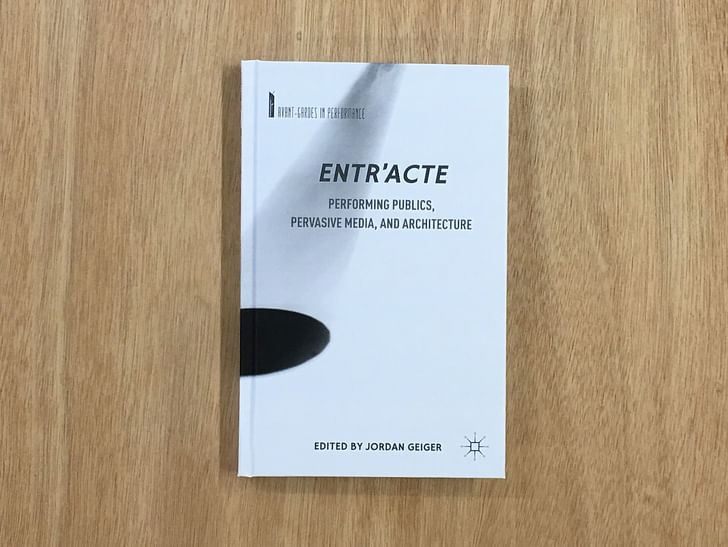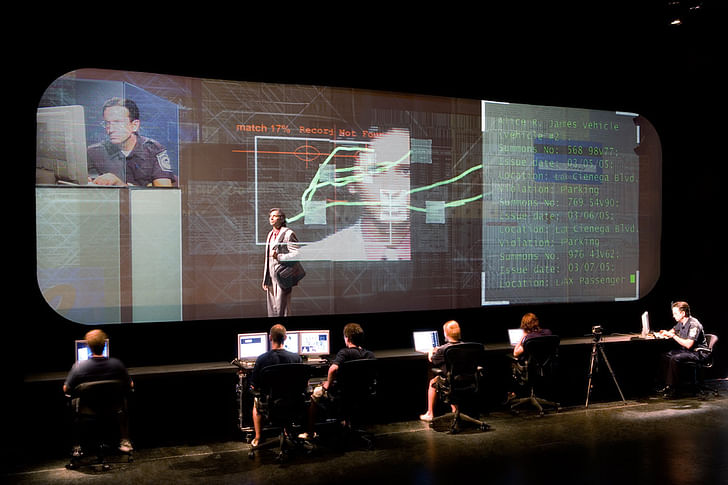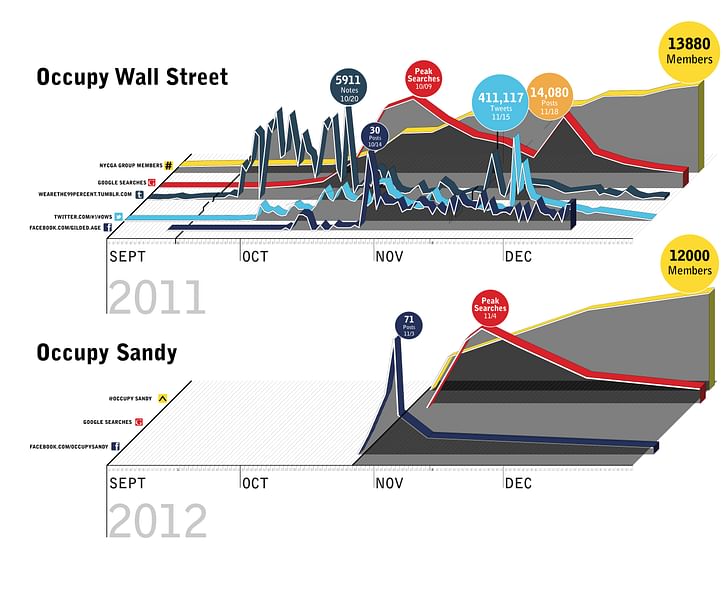

During the month of May, inspired in part by the theme of Alejandro Aravena’s Venice Biennale, Reporting from the Front, Archinect’s coverage has included a special focus on socially-engaged practices and, accordingly, hosted many conversations about how and why architects should engage with the public. Yet largely absent from this discussion is the question of who or what constitutes the public today.
Far from an immutable entity, the morphology of a “public” is determined by the sociopolitical conditions of any given era, as well as the economic and technologic factors that shape those conditions—from access to education to technologies of information dissemination. In Entra’cte: Performing Publics, Pervasive Media, and Architecture, a collection of writings edited by Jordan Geiger, the rapid technological, sociopolitical, economic, and ecological changes of the contemporary moment accord with shifting forms of the public today.

The volume begins with a conversation between Geiger, Assistant Professor of Architecture at the University of Buffalo, and Paul Virilio, the noted philosopher. Here, the organizing metaphor of the book is explicated: the theatrical entr’acte, or the interval between two acts in a performance, becomes a model to understand “new and ephemeral formations of publics in the context of new and evolving technologies,” according to Geiger. In turn, both interstitial spaces and interim periods of time constitute the interval; a transitional moment in spacetime.flows of displaced peoples, information across globalized networks, stock exchanges operating at barely fathomable speeds
This transitional moment of the present is described as marked by an accelerating tendency for deterritorialization and disembodiment: flows of displaced peoples, information across globalized networks, stock exchanges operating at barely fathomable speeds. According to Virilio, these movements explain systemic cracks or accidents that are occurring everywhere, from geopolitics to the microcosmic scale of the individual body. “Interstices are accidents,” the philosopher asserts. And “architecture is an interstice.”

So begins Entr’acte, a book that seeks to identify “the essentially fleeting states of urban publics with ubiquitous computing technologies, and then to call out the fraught, co-optable language that attends these states.” The book addresses these concerns through three scales or vantage points: the supranational, the interurban, the transindividual. At the same time, Geiger recommends “entry at any point” to the book, although it’s not really an A Thousand Plateaus-type read, so I’d recommend making recourse to the table of contents.From subterranean cloud computing infrastructure to handheld and embedded interfaces, planetary-scale computation can be understood as an accidental megastructure.
My favorite essay in the “supranational section” is Benjamin Bratton’s excellent “Cloud Megastructures and Platform Utopias.” In it, he writes, “From subterranean cloud computing infrastructure to handheld and embedded interfaces, planetary-scale computation can be understood as an accidental megastructure.” He proposes understanding this megastructure as a “global Stack,” comprising “Cloud,” “City,” and “User” layers. Bratton proceeds to discuss the design of corporate headquarters for companies like Apple and Foxconn, as well as their dystopian social management and surveillance capacities, in relation to the utopian imaginings of architects like Rem Koolhaas or Constant Nieuwenhuys. The totalizing tendency of these sites, which manage every level of the Stack, present a frightening vision of a present-future that approaches corporate totalitarianism.

In the “interurban” section of Entr’acte, Jonathan Massey and Brett Snyder pen “the Hypercity that Occupy Built,” one of the most optimistic views of Occupy I’ve read in years. Locating activists’ use of social media as well as urban places as a form of “open-source urbanism,” the authors describe a “hypercity” built by Occupy, characterized by an arsenal of strategies towards both technology and the built environment. “The heavy infrastructure of the built environment and the lighter infrastructures of social media, online networks, and location-based technologies inform one another as they enable and shape practices of citizenship, insurgency, and political disobedience,” they write. Noting that the long-term impacts of Occupy mobilizations are hard to characterize yet, their influence on public discourse remains and “the imbrication of digital media into the physical city in practices of politically engaged open-source urbanism seems still to be accelerating, not only in commerce and social life but also in political engagement.”Spatial practitioners that can manipulate both digital and spatial information are likely to be performing not only the entr’acte, but also center stage
The “transindividual” section, the smallest scale, includes two descriptions of art projects. Brenda Laurel’s “STE[A]M Park” project is a response to the dominance of STEM (Science, Technology, Engineering and Mathematics) curricula, with the added ‘A’ for art. Involving an AR interface to construct a “virtual park,” the project aims to enable new relationships to the “kept nature” of a park and other Anthropocene sites. Additionally, Adrian Blackwell and Eduardo Aquino describe their intensely multi-media project Sound and Projection Field, constructed above Toronto’s largest urban plaza in 2010, in a philosophy-infused text. Finally, Keller Easterling concludes the book with an afterword that underscores and reframes the conversations in Entra’cte. She asserts: “...Spatial practitioners that can manipulate both digital and spatial information are likely to be performing not only the entr’acte, but also center stage.”

Too often, conversations around the place of technology in our cities stick to one end of a bipolar framework: the messianism of the “smart city” or the apocalypticism of a tech dystopia. But, as these and the other essays collected in Entr’acte make clear, the morphology of the future is not yet set. Rather, the interval-character of the present demands renewed attention to the manner in which new formations of publics emerge alongside novel technologies. Entr’acte exemplifies the nuanced thinking required for studying, and provides possible case studies for intervention in, the construction of our future public sphere.
Entr'acte: Performing Publics, Pervasive Media, and Architecture is edited by Jordan Geiger and available for purchase through Palgrave MacMillan.
This book review was written under the auspices of Archinect's May theme, Help. For more on architecture's social equity, head over here.
Writer and fake architect, among other feints. Principal at Adjustments Agency. Co-founder of Encyclopedia Inc. Get in touch: nicholas@archinect.com
No Comments
Block this user
Are you sure you want to block this user and hide all related comments throughout the site?
Archinect
This is your first comment on Archinect. Your comment will be visible once approved.